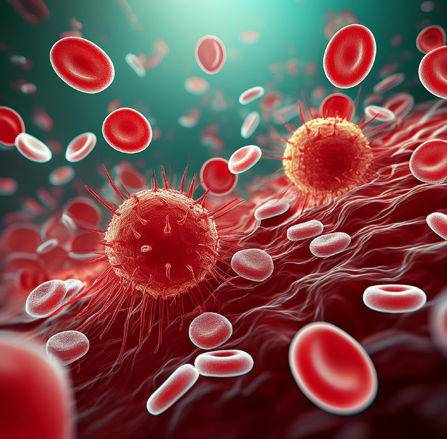Once Jean and Omu had finalized their experimental design, Jean flew back to the US. Back in the UPenn lab Jean called a meeting to brief her team. The researchers were happy about starting a new project and working with scientists in Kenya. But they were exhausted. They had proved over the course of the last week that a molecule, IP-10, played a role in controlling the immune response to viruses. This was a great breakthrough for her team.
Jean, seeing how tired they were, told them to head home. She would take care of the blood samples that were coming in that day. The lab was using whole blood from volunteers to study immune responses to infectious diseases and vaccination. They first had to isolate the lymphocytes from the blood. The process of isolating lymphocytes was tedious. But Jean found the task relaxing. It involved taking the whole blood and slowly layering it over a sucrose gradient. The test tubes with the two layers would then be centrifuged.
Red blood cells are heavier than lymphocytes so during centrifugation the red blood cells pellet at the bottom of the test tube. The lymphocyte cells form a cloudy buffy coat floating between the blood plasma and the sucrose solution. The layering process was slow and methodical. She could not allow any mixing to occur between the two layers or the isolation would yield lower lymphocyte numbers.
This layering process was a time for Jean to be just present in the moment, focused on this one slow easy task. This and cleaning up the laboratory was, at times, Jean’s meditation.
Once done with the layering and lymphocyte isolation, Jean had some ice cream, answered emails and started working on a presentation. She was headed to an international conference in Barcelona, Spain and it would be a great place to present the new data. Before she left the lab Jean had one other item to take care of, printing out pages for a grant she was reviewing. The grant she was reviewing involved developing a vaccine for Anthrax.
